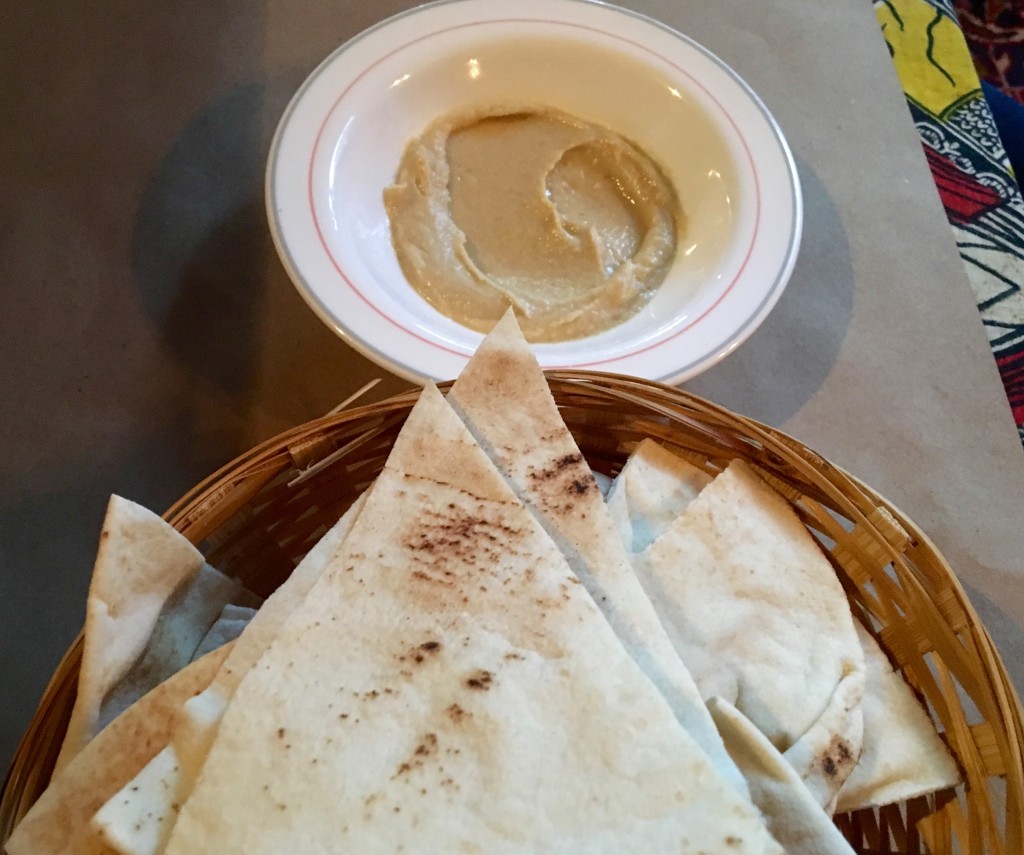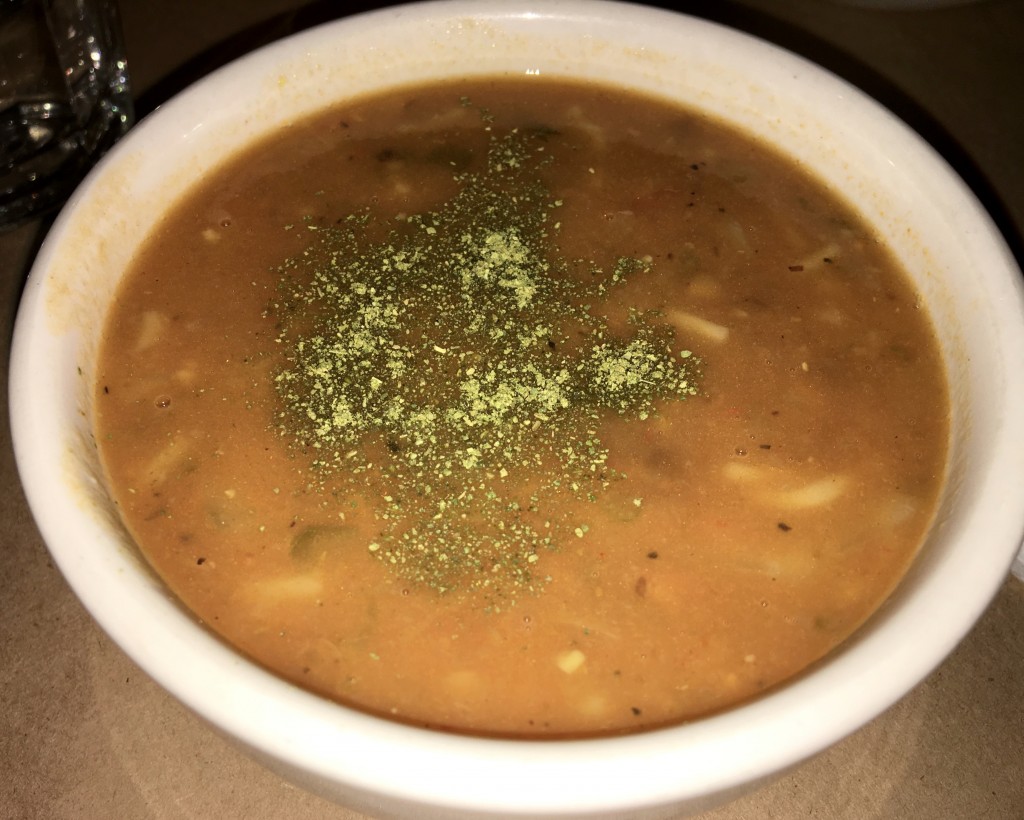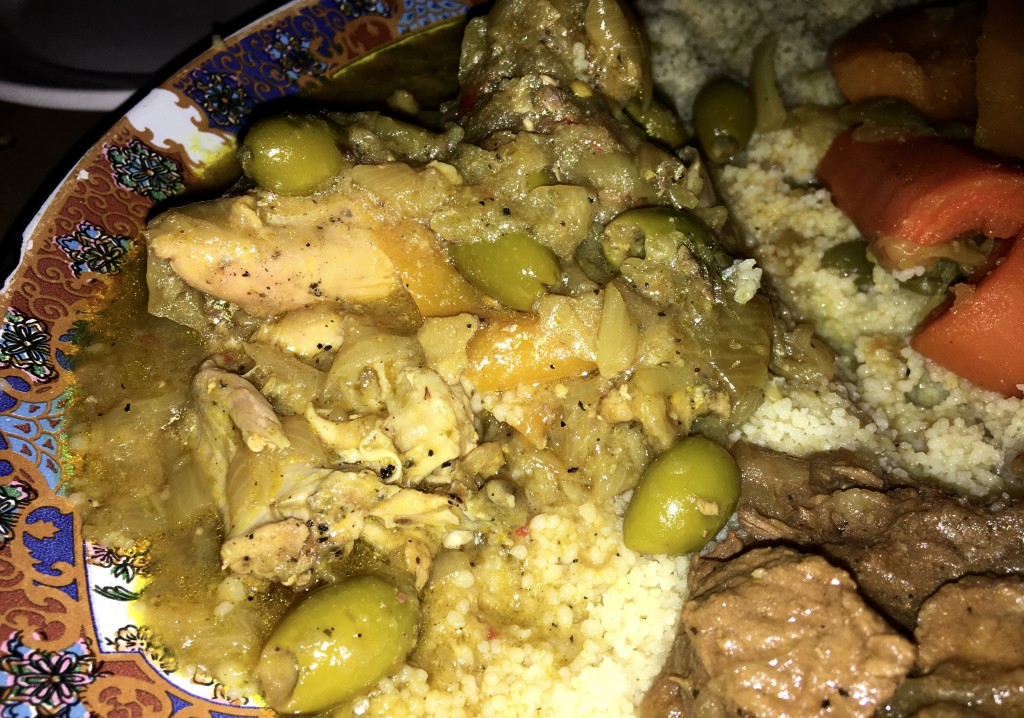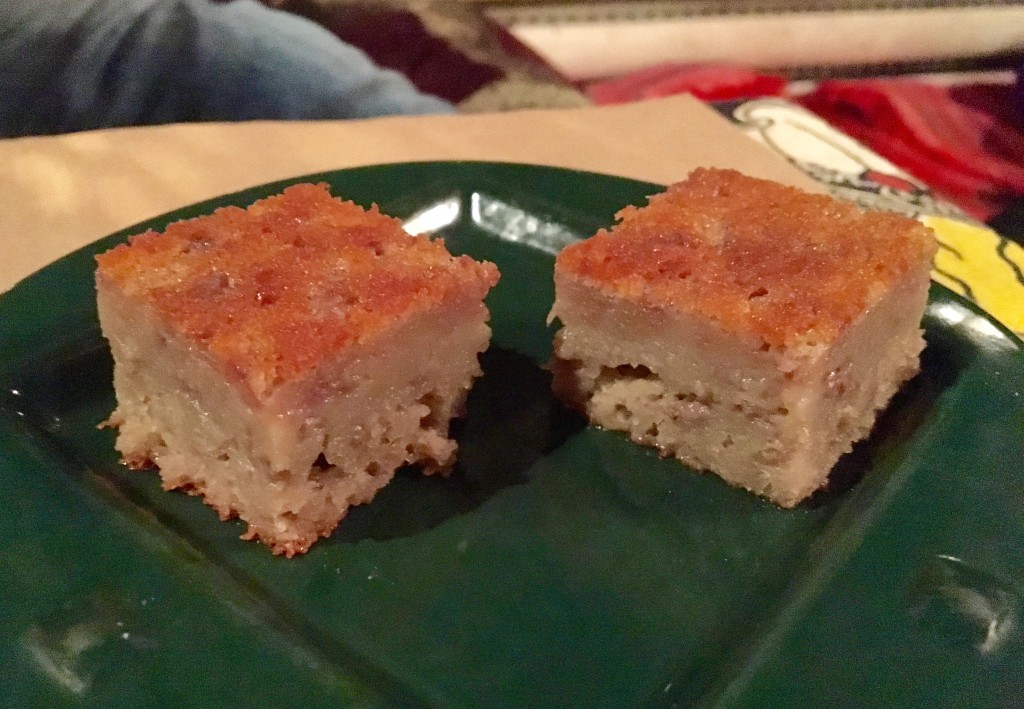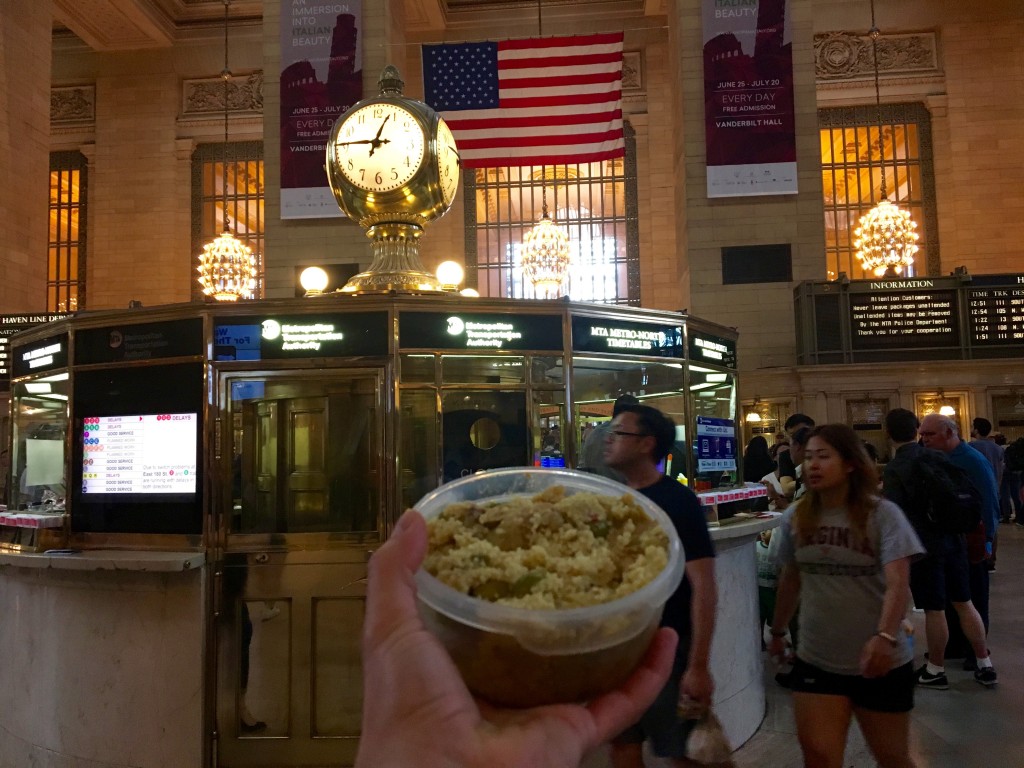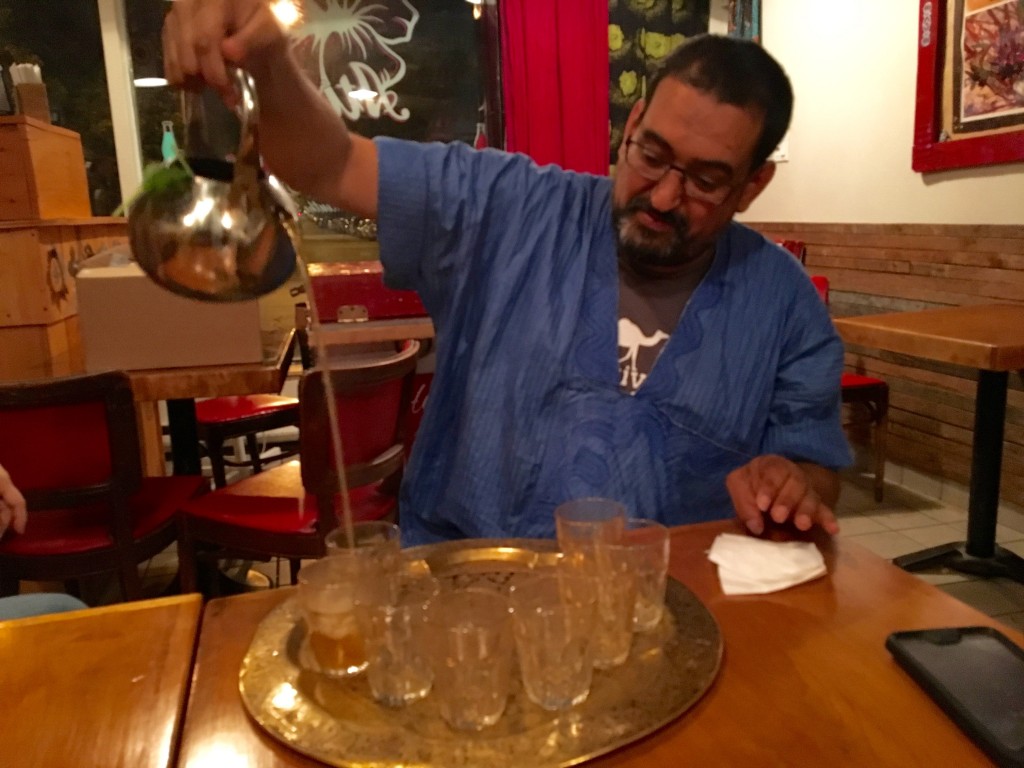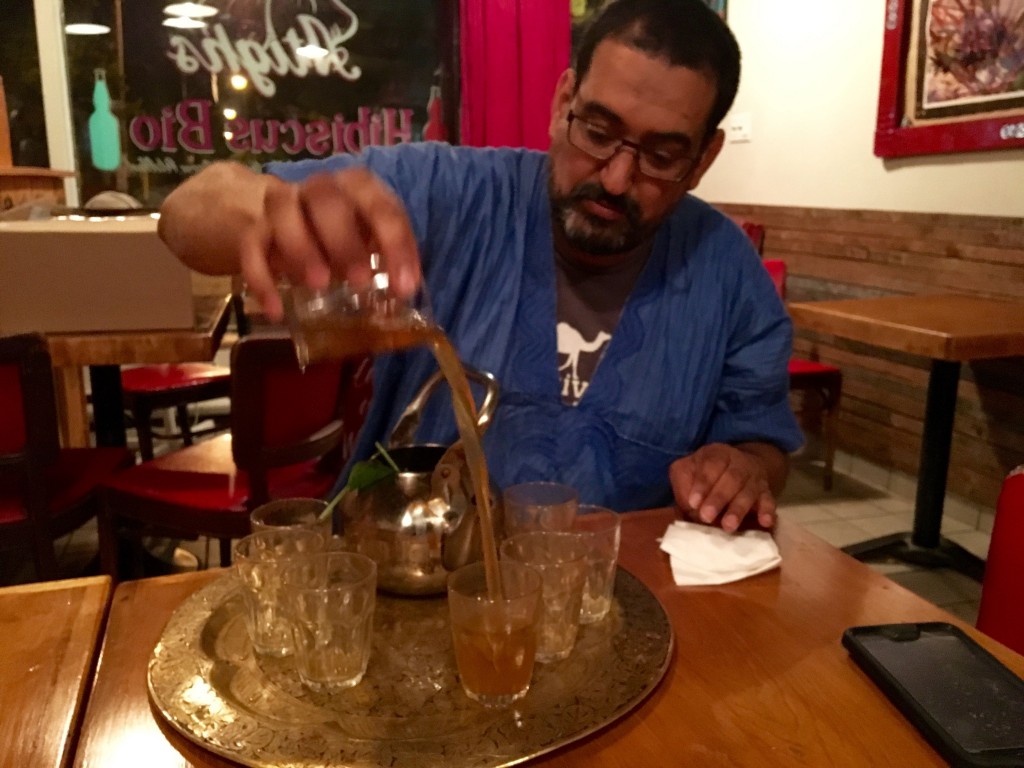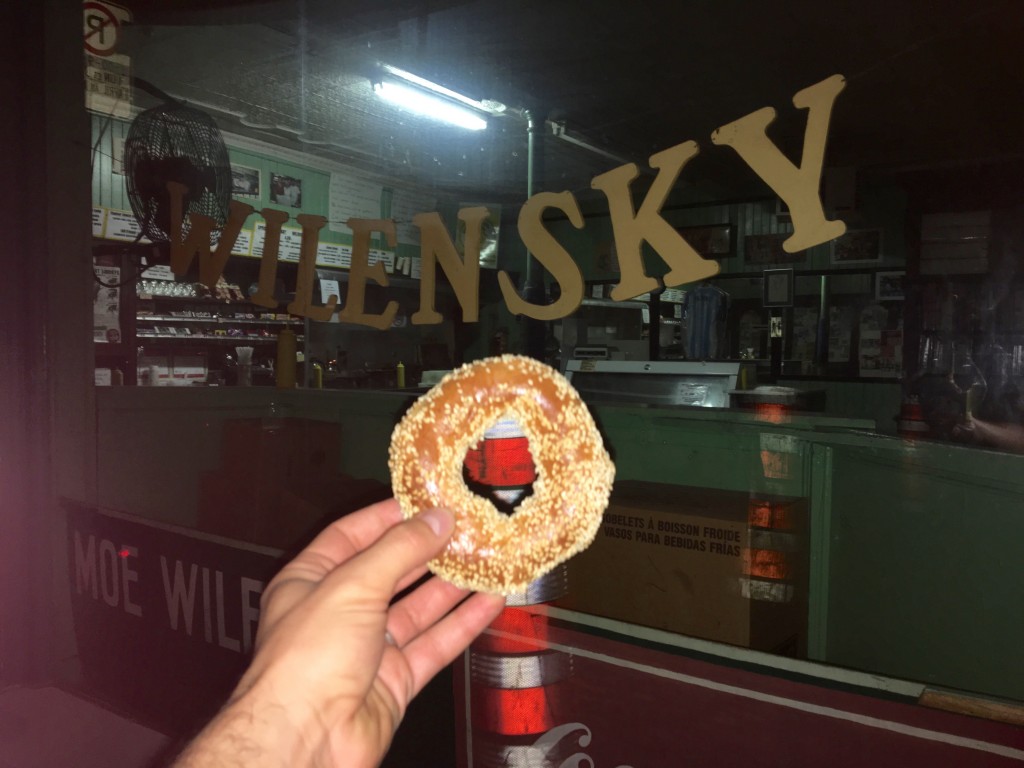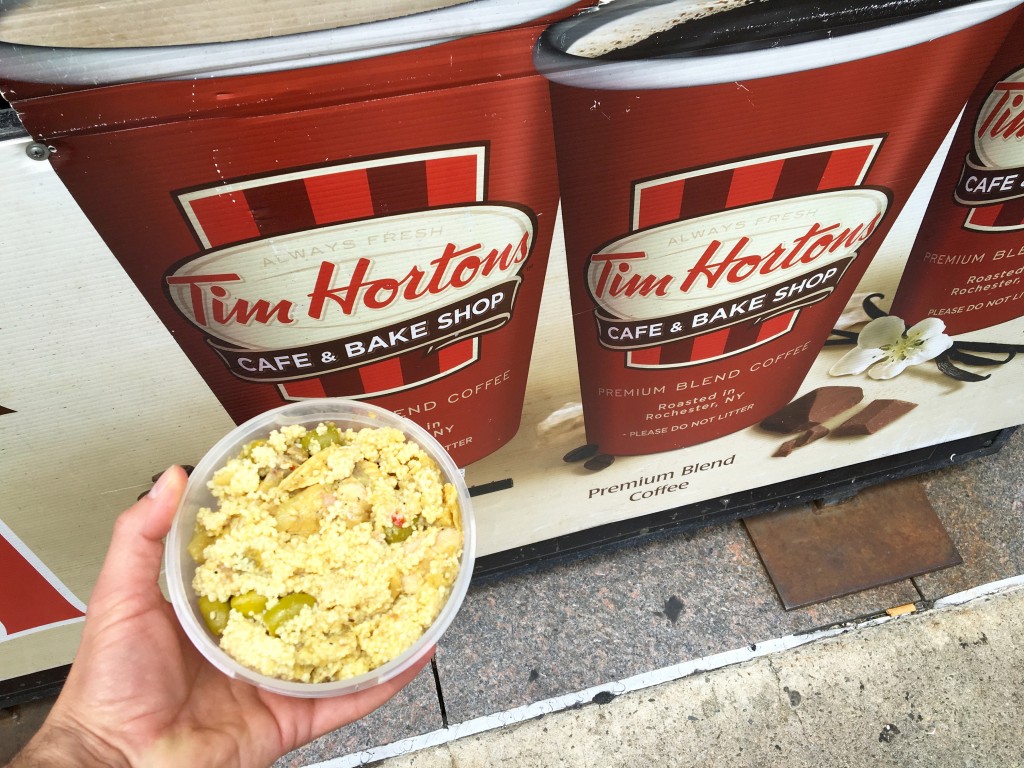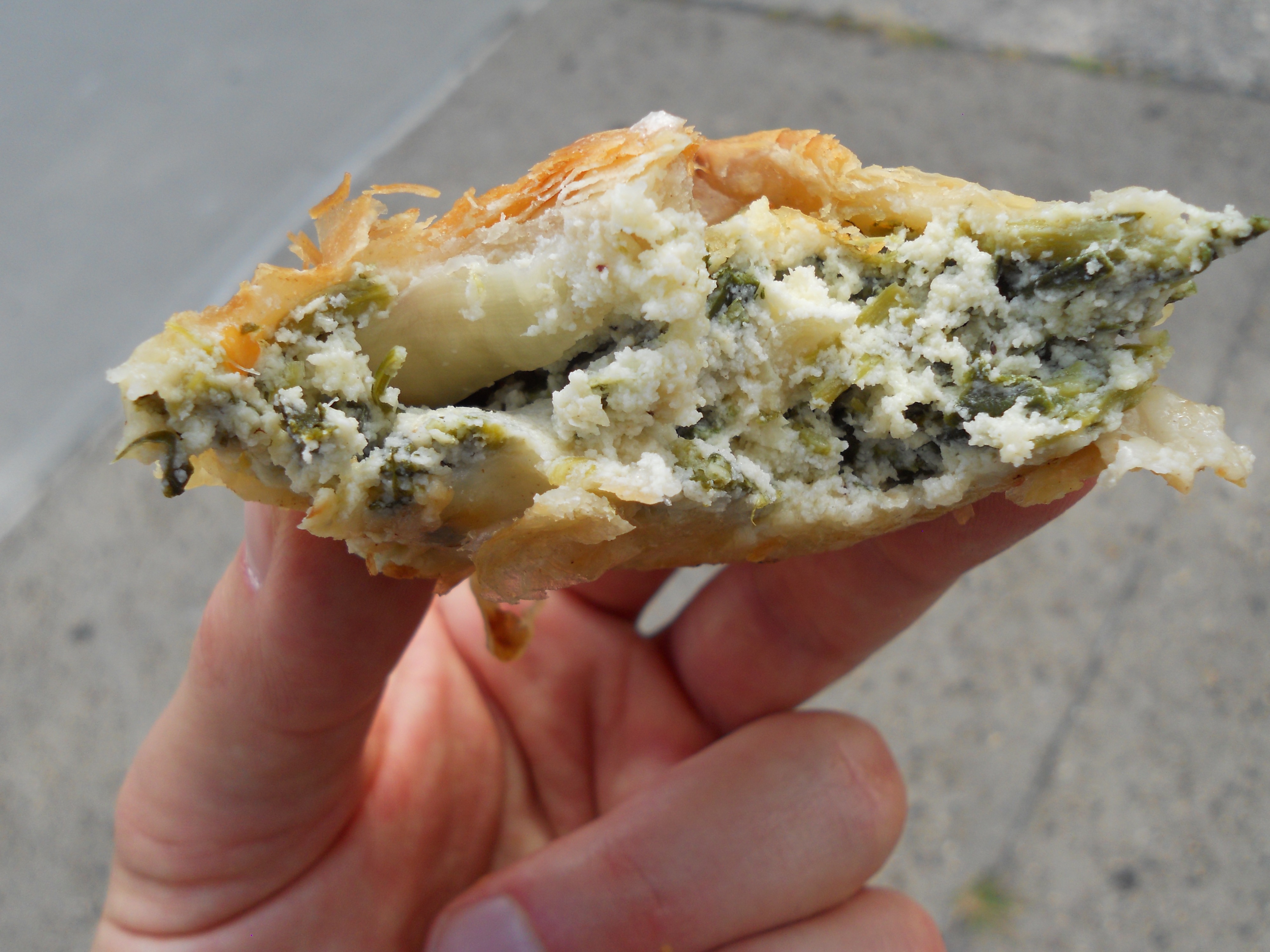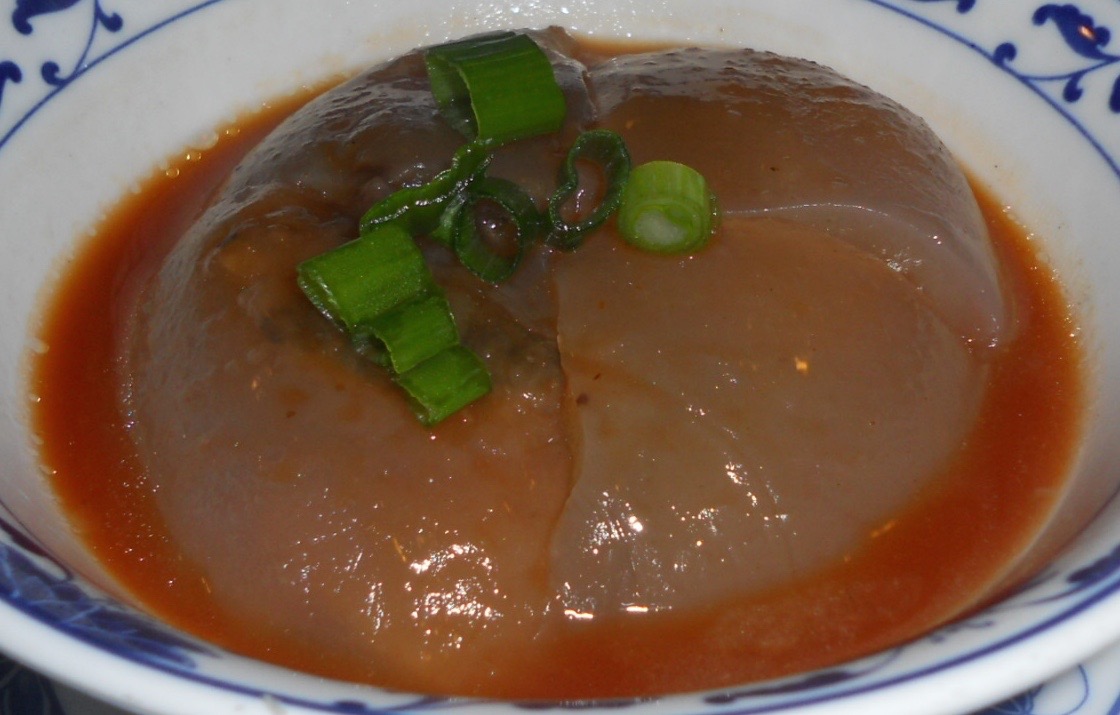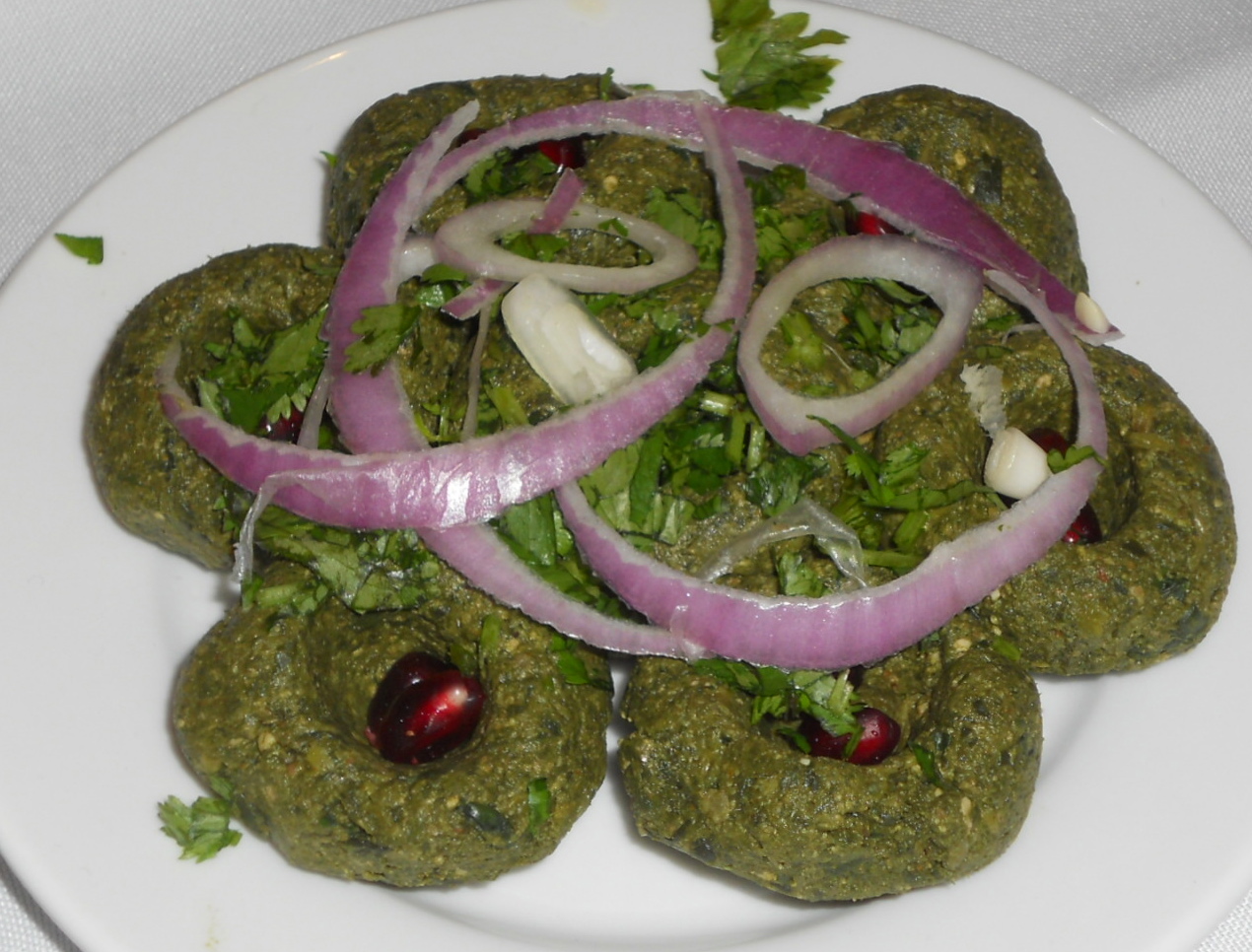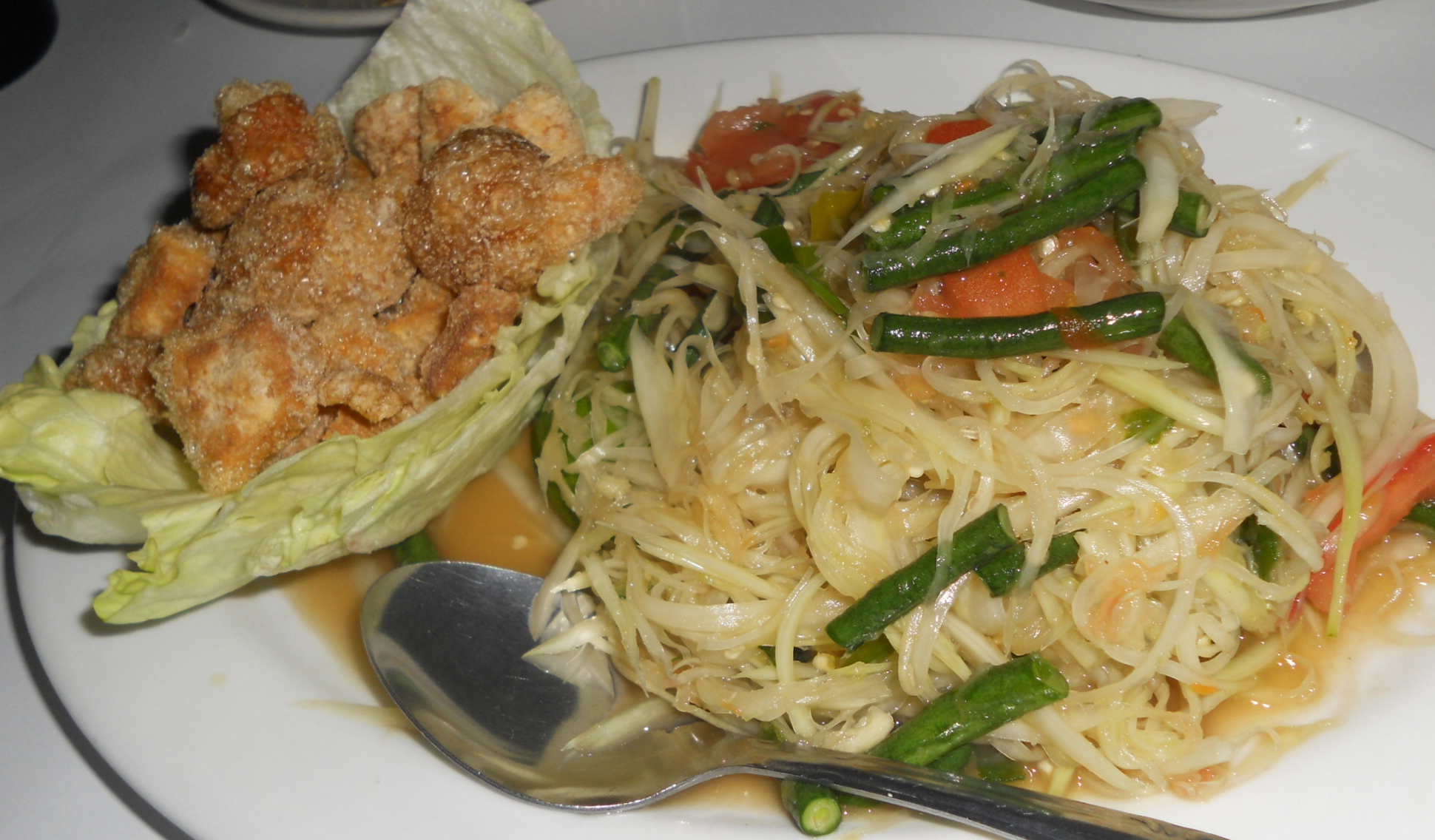Pretty much my entire life revolves around hard-to-find international foods, but this is one of my favorite finds ever: I just ate in the world’s only Mauritanian restaurant outside of Mauritania.
Here’s the story: I contacted absolutely everybody I could find from Mauritania. Unfortunately, that was only one guy: a fellow named Nasser Wedaddy, who is listed in Wikipedia as the only prominent Mauritanian-American who actually lives in the United States. His home is in Boston, but he agreed to speak with me after I tweeted at him a couple of times.
Nasser is pretty much a walking encyclopedia of Mauritanian history, politics, and culture, and I can’t possibly do our conversation justice here – after all, you probably just visited this food blog for pictures of couscous, right? But I was riveted by everything Nasser had to say about Mauritania. He described Mauritania as “the most African Arab country,” thanks to the country’s mix of Bedouin and other African cultures. West African standards like mafe and yassa and thiebu djen are popular in Mauritania, though they’ve been “Mauritanian-ized” to suit local tastes and ingredients.
And of course, Mauritania has plenty of fascinating native treats that probably merit their own book: sea turtle soup; a haagis-like dish called kouzo-nouzo, made with barbecued offal; a variety of beverages made from baobab (“monkey fruit”) that are known to cure diarrhea; bread that’s baked underground, in a particular type of hot sand; a regional delicacy made from camel hump and liver; and countless variations on couscous, which are made from a wide variety of grains, including fonio, cassava, and millet. Apparently, you can even get a camel milk latte in Mauritania if you know where to look.
It was distressing to hear Nasser discuss the changes in Mauritania over the past 40 or 50 years. The country – and its traditional foodways – have been throttled by climate change since the 1960s or 1970s, as a massive, long-term drought turned huge swaths of the country into desert. Sadly, only a tiny percentage of the country’s traditional nomads maintain any semblance of their traditional lifestyle. And Nasser always has plenty of fascinating things to say about Mauritanian and international politics – check out his always-interesting Twitter feed for more.
And my ears perked up when I heard a few magic words from him: there’s a Mauritanian restaurant in Montreal.
I’d just been invited to a magnificent East Timorese dinner in Canton, New York – two hours from Montreal. So, um… well, what a coincidence! I guess I’m going to Montreal.
La Khaïma, in Montreal’s legendary Mile End neighborhood, isn’t really a restaurant. I mean, sure: they bring you food, and you pay them money. But it’s more like a work of cultural art, channeling the spirit of Mauritanian nomads in the heart of Montreal. When you walk in, you remove your shoes, and take a seat on a cushion on the floor. The walls and ceilings are covered in tapestries that owner Atigh Ould brought back from his homeland. And there are no printed menus: it’s as if you’re eating in the home of a Bedouin nomad, and you’re offered whatever fresh food happens to be available that day.
On this particular day, we started with a bright, citrusy hummus, served with pita bread:
Round 2 consisted of an outstanding bowl of harira soup, featuring lentils, chickpeas, vermicelli, vegetables, and plenty of cumin:
For our main course, we shared a communal bowl with three different types of couscous: beef with okra; a vegetarian stew featuring carrots, squash, and potatoes; and chicken cooked with green olives:
There was something particularly magical about the chicken-olive couscous. Here, take a closer look:
For dessert, we enjoyed a treat that resembled a honey-soaked banana bread, served with a delicious, lightly sweetened mint tea:
All four courses were fantastic, but that’s not necessarily the point. La Khaïma is one of those unhurried, relaxed places where you instantly feel like a member of the family. We lingered for about two and a half hours; two neighboring tables of relaxed Francophones lasted even longer. It’s like we all just decided we lived there.
And our wonderful, warm, relaxed server pretty much acted like we were members of the family. We told him how much we loved the chicken and olive couscous in particular; when he packed our leftovers in a to-go box, he very generously added a pile of extra chicken.
And that was before he knew that the chicken would be making an international journey for a glamorous photo shoot in New York City’s Grand Central Station.
As great as the dinner was, it wasn’t even the best part of our visit.
As we were leaving, the owner, Atigh, arrived after a night of Mauritanian music at the Montreal Jazz Festival. His reappearance was fortuitous, because I was under strict instructions from Nasser Wedaddy, the wonderful Boston-dwelling Mauritanian who had sent me to La Khaïma: call me when you arrive, and pass the phone to Atigh.
And damn, I wish I had taken a picture when I handed him the phone. Atigh and Nasser grew up together in Mauritania, and the Wedaddy family is legendary in their homeland: Nasser’s father had brought radio broadcasting equipment via camel from Senegal, and introduced a nightly broadcast for the nation’s nomads. He’s credited as one of the men who helped unify modern Mauritania, and he later served as a diplomat, among other things.
And when he heard Nasser’s voice on a random visitor’s cell phone, the look on Atigh’s face was absolutely priceless.
Even more priceless: a long evening with Atigh, drinking tea and learning about Mauritania and Montreal. I can’t even begin to describe everything we learned about Mauritania that night. Nasser and Atigh need to co-author a book, and you probably need to read it.
Atigh fascinated us with descriptions of the traditional nomadic lifestyle: Atigh’s forebears would move from location to location based on cues from the shifting winds, which would tell them when to migrate to the date groves or to the coast for a seasonal bounty of fish. Even more amazing: apparently, patches of the Atlantic ocean actually contain fresh water, desalinated by a particular aquatic plant that the nomads had learned to identify.
In his restaurant, Atigh seems determined to embody the spirit of Mauritanian nomad hospitality in everything he does. The meals are seasonal, and based on local ingredients wherever possible. He has developed relationships with local producers, including a bunch of students who produce some remarkably tasty blue kale on a decidedly non-commercial scale. And many of the spices used in the cuisine are grown on Atigh’s own land in Mauritania, which he visits once or twice a year.
Atigh also insists that he’s a terrible salsa dancer; so bad, in fact, that the salsa school he attended for nearly a year refunded his tuition. I am not making this up.
Despite his lack of salsa skills, the man is a ton of fun. He loves to mess with stressed-out customers, telling them rambling stories about how there isn’t any food today because his brother back in Africa can’t find his camels, just to see the look on their faces. Of course, there’s always food at La Khaïma – but sometimes, eat-and-run Westerners deserve to be messed with.
And there’s always tea at La Khaïma. Atigh generously prepared a special pot of tea for us — at nearly midnight, after the restaurant had closed — made from a mix of mint and jasmine tea leaves. He energetically poured the tea from a dizzying height, then quickly poured it from glass to glass, then back into the pot. He did this repeatedly, until the tops of our glasses were frothy:
As it turns out, aerating the tea improves the flavor, and the oxygenated tea is also thought to cure headaches. This was among the most delicious teas I’d ever tasted; I’m not sure whether it was the high-altitude pour, or just Atigh’s artful blend of fresh tea leaves.
Once we finished our tea, Atigh took us on a tour of his beloved Mile End neighborhood, home to Wilensky’s legendary sandwich shop, where mustard is not optional. Atigh also took us to visit his friends at Fairmount Bagels, an infamous 24-hour bakery that makes bagels in a wood-fired oven – with honey, sesame seeds, and egg – literally all night long.
So yeah: I was eating Montreal bagels – straight from a wood-fired oven – at 1:30 in the morning with the western world’s only Mauritanian restaurateur, in front of an eccentric 80-something-year-old sandwich shop. I was in heaven.
There was only one problem: Montreal is not New York City, and… well, you know, I have rules or something. So I smuggled some leftover couscous with chicken and olives across the border, took a few photos of the meal in Grand Central, and then ate it in front of a Tim Horton’s in Midtown. Somehow, that felt appropriately Canadian – and appropriately nomadic.
La Khaïma
142 Avenue Fairmount Ouest
Montreal, Canada
I know: I get an asterisk for this. Know anybody in NYC who might be willing to prepare Mauritanian dishes or other hard-to-find cuisines? Please email me at unitednationsoffood@gmail.com, or connect with me on Twitter, Facebook, or Instagram.


